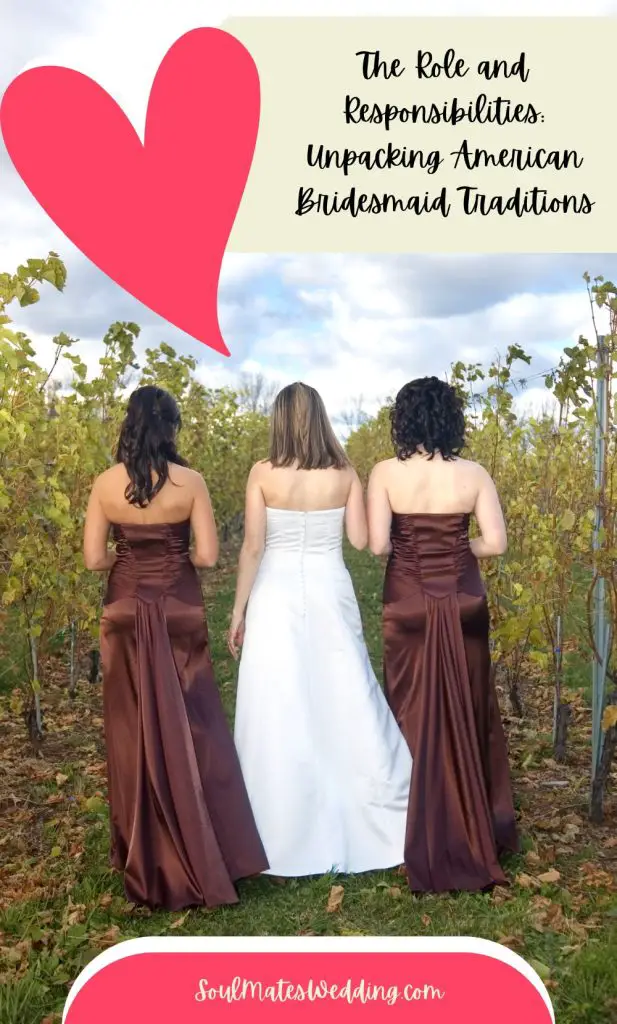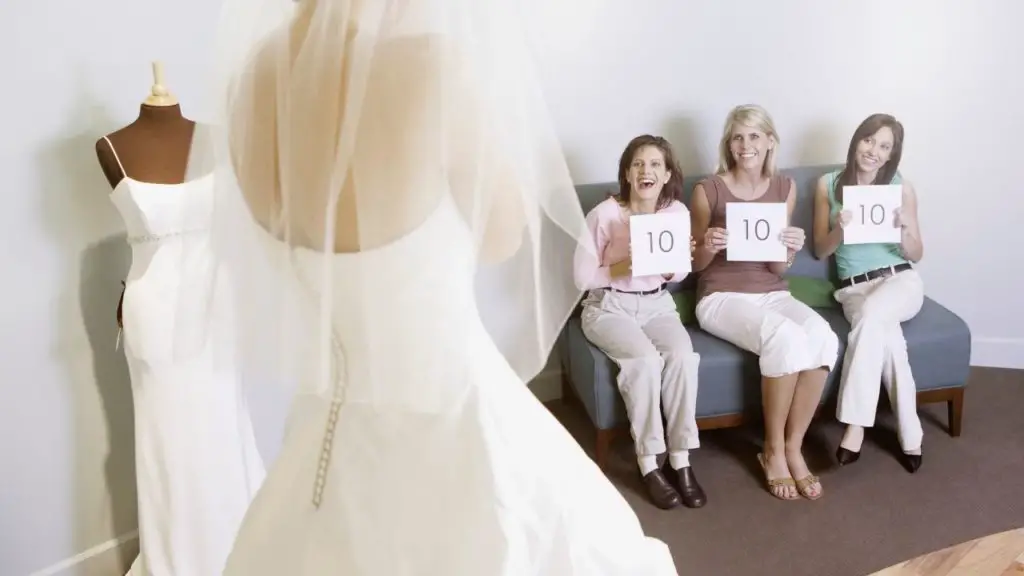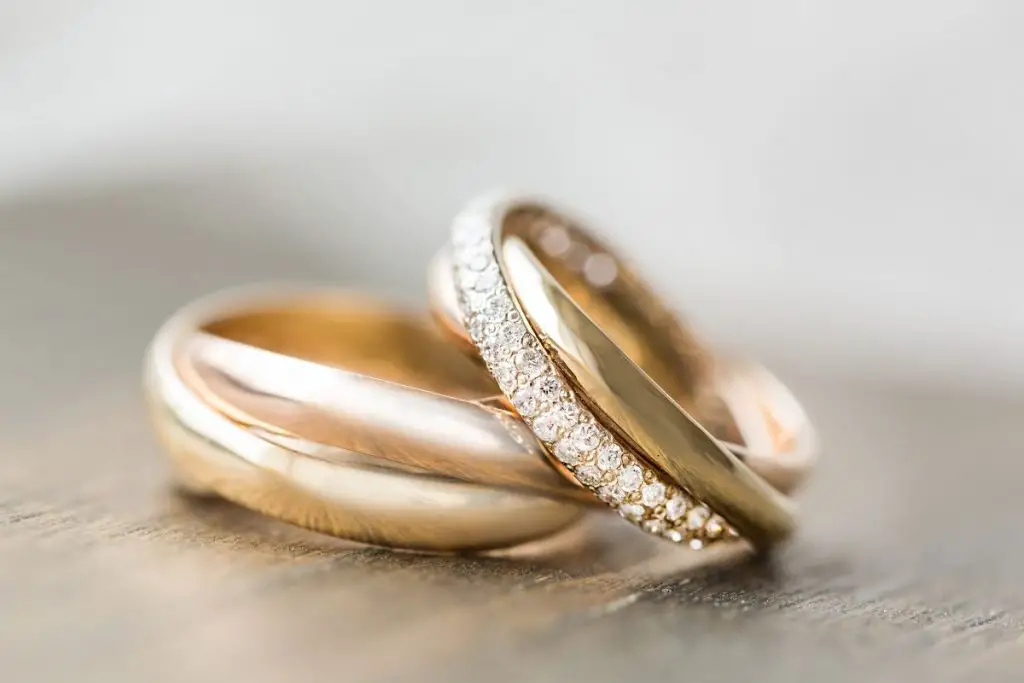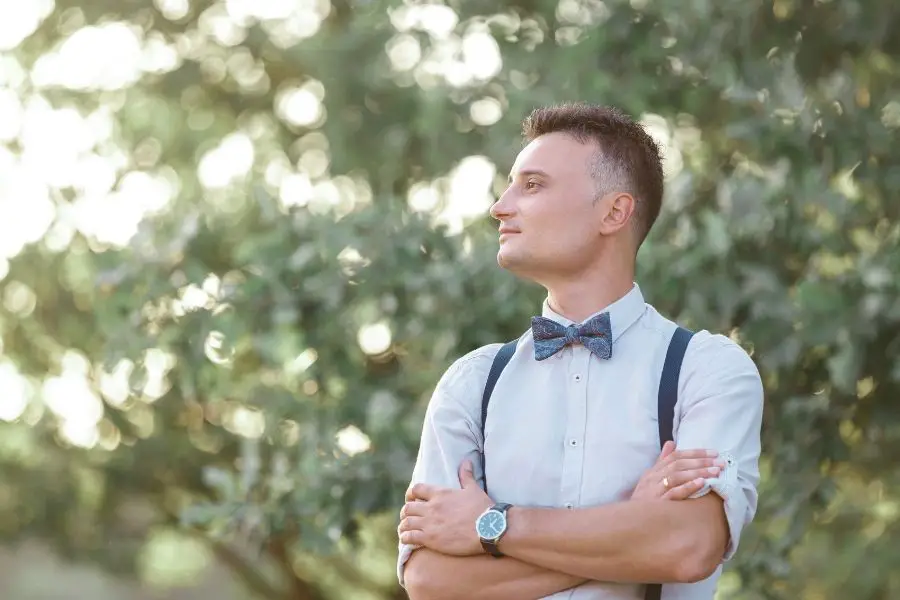In American weddings, bridesmaids hold a position of honor, tasked with more than just looking lovely in coordinated dresses. Their duties extend beyond the aesthetic, with responsibilities steeped in tradition, friendship, and support for the bride. This post will delve into the historical roots of these customs, their significance in modern weddings, and the delightful charm they add to these cherished ceremonies.
Bridesmaids play a significant role in American weddings, often regarded as the bride’s emotional support system. They are involved from the engagement announcement to the wedding day itself, acting as confidantes, organizers, and cheerleaders throughout the wedding planning process.
Bridesmaids assist with tasks like choosing the wedding dress, planning the bridal shower, and ensuring the bride is calm and composed on the big day. Their presence in matching dresses is also profoundly symbolic, tracing back to old traditions intended to confuse evil spirits.
Indeed, the role of bridesmaids is multifaceted, responsible not just for adding to the aesthetics of the day but also for ensuring the smooth running of events and keeping the bride’s spirits high.
Historical Background of American Bridesmaid Traditions
The tradition of bridesmaids in American weddings can be traced back to biblical times. The Book of Genesis narrates a story of a wedding with a bridal party, where the bride had a maid of honor. Over time, these traditions evolved and found their place in Roman law, which required ten witnesses at a wedding, leading to the formation of the bridal party.
In the early American colonial period, bridesmaids often helped the bride in practical ways, such as making the wedding dress, preparing the wedding feast, and even helping to decorate the ceremony site. Bridesmaids’ dresses during this era were usually handmade and were considered a significant wedding gift from the bride.
The Victorian era in the 19th century saw a change in bridesmaid traditions, aligning more with contemporary practices. Bridesmaids were chosen from unwed young women of marriageable age in the family or social circle. Their matching attire was believed to ward off malicious spirits by confusion, a belief that continues to be symbolized today.
The role and responsibilities of bridesmaids have continually evolved, reflecting societal changes and shifting attitudes towards marriage. Today, while the spiritual and practical aspects of their roles still exist, bridesmaids are primarily seen as a pillar of emotional support and companionship for the bride throughout the wedding journey.
Influence of Other Cultures on American Bridesmaid Traditions
The American bridesmaid traditions, like many other facets of the country’s culture, have evolved with influences from various cultures across the globe. A key influence comes from British traditions, with the Victorian era significantly shaping the roles and duties of bridesmaids in American weddings. The idea of bridesmaids wearing matching dresses, for instance, traces its roots back to Queen Victoria’s wedding, where she had her bridesmaids wear identical white dresses. This custom, intended to ward off evil spirits, has been widely adopted in American wedding traditions.
Another significant influence on American bridesmaid practices comes from the East. For instance, the idea of hand-fasting, a Celtic ritual in which the bride and groom’s hands are bound together to symbolize their union, has been incorporated into some American weddings. This ceremony often includes bridesmaids, further expanding their roles and responsibilities.
Similarly, some American bridesmaids’ practices have been influenced by Hispanic traditions, such as the “madrina” or “godmother,” who takes on a role similar to that of the maid of honor in the American wedding tradition. The madrina helps plan the church ceremony and guides and supports the bride.
Overall, the American bridesmaid tradition is a beautiful blend of customs and rituals from different cultures, creating a unique, inclusive, and multifaceted role that continues to evolve. It is a testament to the country’s diverse cultural fabric, bringing together age-old customs and modern practices to celebrate love, friendship, and unity.
Common American Bridesmaid Traditions

Role of the Maid of Honor
The Maid of Honor holds a unique role within the ranks of the bridal party, often seen as the bride’s right-hand woman throughout the wedding preparations and ceremony. As the lead bridesmaid, she takes on many responsibilities, providing crucial emotional and logistical support to the bride.
In the lead-up to the wedding, the Maid of Honor often assists with essential tasks such as dress shopping, sending out invitations, and planning bridal showers and bachelorette parties. Her role extends to the wedding day, where she may help the bride get dressed, hold the bride’s bouquet during the ceremony, and even stand as a witness while the bride and groom sign the marriage certificate.
Additionally, the Maid of Honor is typically expected to deliver a heartfelt speech at the reception, share a toast to honor the newlyweds, and ensure that guests are having a good time. In essence, she serves as a confidante, a counselor, a personal assistant, and a friend to the bride, playing a pivotal role in creating a memorable wedding experience.
Dressing in Matching Outfits
A significant and visually striking aspect of American bridesmaid traditions is the custom of dressing in matching outfits. This convention is rooted in the belief, dating back to ancient times, that similar attire would confuse evil spirits and prevent them from harming the bride. Today, while the superstition has faded, the practice of bridesmaids wearing identical or coordinated dresses remains popular, serving as a symbol of unity and solidarity within the bridal party.
The bridesmaids’ attire is usually decided by the bride, considering factors such as the wedding theme, color scheme, and the personal style and comfort of the bridesmaids. Over the years, this tradition has seen some flexibility, with some brides opting for a unified color palette rather than identical dresses, allowing bridesmaids to express individuality while maintaining a cohesive look. Furthermore, the tradition has expanded beyond dresses to include matching accessories like jewelry, shoes, and bouquets.
Ultimately, the tradition of matching outfits exemplifies the harmonious bond the bride and her bridesmaids share. It adds visual continuity to the wedding ceremony and creates a stunning aesthetic effect that enhances the overall ambiance of the grand event.
Bridal Shower Tradition
The bridal shower is a cherished tradition in American weddings, serving as a pre-wedding celebration and an opportunity to ‘shower’ the bride-to-be with gifts, love, and well-wishes. Originating in the 1890s, bridal showers initially served a practical purpose, helping brides from less affluent families gather necessary household items for their new homes. Over time, however, this tradition has evolved into a joyous gathering, often arranged by the Maid of Honor and bridesmaids, focussed on celebrating the bride’s upcoming nuptials.
The bridal shower typically includes a mix of close female friends and family members of the bride. It’s a time for sharing stories, playing games, and opening gifts, ranging from kitchen appliances to honeymoon accessories. The event often includes a meal or light refreshments, and the decoration and themes vary based on the bride’s tastes.
Over the years, the bridal shower has shifted towards inclusivity and modernity. Co-ed showers, also known as “couple showers,” are becoming increasingly popular, allowing the groom and his friends to partake in the festivities. Whether it’s an intimate gathering or an immense soiree, the bridal shower remains an essential ritual in the wedding process, fostering camaraderie, creating memories, and setting the stage for the bride’s big day.
Bachelorette Party Tradition
The bachelorette party, also known as a hen party in some cultures, is a lively tradition in American weddings, serving as a final celebration of the bride’s singlehood. This event is typically organized by the maid of honor and the bridesmaids, intended to deliver a fun and unforgettable experience for the bride-to-be.
In the past, bachelorette parties were simple gatherings held at home or a local venue, featuring games, gifts, and light-hearted conversation. However, in recent years, this tradition has evolved into more elaborate celebrations, often involving weekend getaways, spa retreats, wine tastings, or even adventure-filled activities, depending on the bride’s preferences.
While the bachelorette party is often associated with wild revelry, the essence of this tradition is the bond shared among the women. It is an opportunity for the bride and her closest friends to connect, share stories, and create lasting memories before she steps into a new phase of life.
Despite the evolution of the bachelorette party over the years, the core sentiment remains the same: a celebration of friendship and a toast to the bride’s upcoming nuptials. As a tradition, the bachelorette party encapsulates the excitement, anticipation, and joy of the journey toward matrimony.
The Tradition of Walking Down the Aisle
Walking down the aisle is one of the most anticipated moments in an American wedding, marking the official commencement of the ceremony. Traditionally, the bride is escorted by her father, symbolizing the transfer of responsibility from her family of origin to her new life partner. This walk is an emotionally charged rite of passage, often accompanied by music and the gaze of loved ones, leading the bride towards the ceremonial altar and her awaiting groom.
This tradition has shifted in recent years, embodying the evolving societal values of independence and equality. Some brides walk down the aisle alone to signify their autonomy, while both parents or a significant family member or friend may accompany others. This moment is often a ceremony highlight, encapsulating the profound transition and its emotions.
Regardless of how it’s done, walking down the aisle is a profoundly personal and decisive moment for the bride. It’s a symbolic journey that marks the end of one chapter and the beginning of another, capturing the essence of the bridal transition from singlehood to matrimony. The tradition remains an integral part of the wedding ceremony, etched in the hearts of all present.
Standing by the Bride’s Side During the Ceremony
One of the most significant roles during a wedding is standing by the bride’s side throughout the ceremony. This honor is typically bestowed upon the maid of honor and the bridesmaids, symbolizing their close relationship with the bride and their support for her journey into married life.
These chosen friends or family members have a crucial role – they not only physically flank the bride during the ceremony but also emotionally support her throughout the wedding process. They help calm her nerves, share in her joy, and provide assistance with ceremonial duties such as arranging her veil or holding her bouquet.
In a symbolic sense, standing by the bride’s side serves as a visual reaffirmation of the close-knit bond between the bride and her chosen companions. It’s a testament to their shared history, mutual affection, and commitment to supporting each other. Whether in laughter or tears, moments of nerves or euphoria, these chosen individuals are there to share in every emotion, making the wedding ceremony a profoundly personal and communal experience.
As we see more diversity in wedding traditions and ceremony structures, the concept of who stands beside the bride has also evolved. It’s not uncommon now to see a ‘bridesman’ or a ‘man of honor’ at the party, reflecting modern-day friendships and relationships. Regardless of who they are, those standing beside the bride serve a meaningful role, embodying the communal aspect of the wedding ceremony and the shared joy of the momentous occasion.
Modern Twists to American Bridesmaid Traditions
The trend of mismatched bridesmaid dresses is gaining momentum in contemporary weddings, offering a fresh, personalized spin on the standard uniform look. The concept involves each bridesmaid wearing a different style, cut, or color, reflecting their style and personality. This trend embraces diversity and adds a unique aesthetic element to the wedding ceremony.
Research indicates that brides are increasingly favoring this trend, providing their bridesmaids more freedom and comfort. It also contributes to the visual interest of the wedding photos, creating a dynamic and vibrant palette.
Prominent wedding planning resources like The Knot and Brides have noted this trend, highlighting the shift towards a more inclusive and personal approach to wedding fashion.
From a practical standpoint, mismatched dresses can accommodate different body types, preferences, and budgets, making it a thoughtful consideration for brides who want their bridesmaids to feel comfortable and confident on the big day.
Indeed, the mismatched bridesmaid dress trend signifies a broader shift in modern weddings: moving from rigid tradition towards more personal, inclusive, and creative expressions of love and unity.
Co-ed bridal parties, or mixed-gender bridal parties, are an emerging trend that breaks away from the traditional all-female bridesmaid lineup. This modern twist allows the bride to include her close male friends, brothers, or other significant men at the wedding party.
According to WeddingWire, about 4% of couples incorporated a mixed-gender bridal party into their wedding in 2020. On the other hand, Brides magazine highlights that co-ed bridal parties can create a more inclusive environment at weddings, providing the opportunity for the bride and groom to have their closest friends and family, regardless of gender, by their side.
These changes reflect the evolution of societal norms and the shift towards more personalized and inclusive wedding ceremonies. The concept of ‘bridesmen’ or ‘men of honor’ is now increasingly accepted and celebrated, illustrating that at the heart of these traditions is the desire to share this momentous occasion with those closest to us.
Destination bachelorette parties have become popular, allowing the bride and her closest friends to bond and create lasting memories before the wedding. Instead of a traditional night out, these parties often span several days at an exciting destination, ranging from tranquil beach resorts to bustling cityscapes.
This trend offers a unique twist on the conventional bachelorette party, combining the fun and festivity with the thrill of travel and exploration. Not only does it provide a celebration of the bride’s upcoming nuptials, but it also offers a brief retreat from wedding planning stress.
According to a survey by The Knot, about half of all bachelorette parties are now destination-based, with popular locations including Las Vegas, Nashville, Miami, and even international locales like Mexico’s Riviera Maya. These destinations typically offer a mix of relaxation, adventure, nightlife, and culture, catering to a broad range of preferences within the party.
However, while destination bachelorette parties can be entertaining and memorable, they also require more planning and can be more costly. As such, the bride and her party must consider factors such as budget, timing, and the availability of attendees before deciding on a destination bachelorette party.
Conclusion
In summary, modern American bridesmaid traditions have significantly shifted towards more personal, inclusive, and creative expressions. The mismatched bridesmaid dress trend embraces individuality and adds visual interest to the ceremony while accommodating different body types, preferences, and budgets.
Mixed-gender bridal parties, including ‘bridesmen’ or ‘men of honor,’ are becoming increasingly popular, reflecting evolving societal norms and a desire for personalization. Lastly, the trend of destination bachelorette parties offers a unique twist on traditional celebrations, combining fun and festivity with travel and exploration.
Though planning and costs can be more intensive, they provide an opportunity for memorable bonding experiences before the wedding. As we’ve seen, these modern twists to bridesmaid traditions are about more than style or novelty – they are about creating a more inclusive and comfortable environment for all involved in the momentous occasion.
Frequently Asked Questions

Cynthia Pate is a passionate writer and wedding enthusiast, dedicated to helping couples create their dream celebrations. With years of experience in the wedding industry, Cynthia has developed a deep understanding of the latest trends, timeless traditions, and unique ideas that make every wedding special. Her articles cover a wide range of topics, from planning and decor to etiquette and fashion, always with the goal of providing practical advice and inspiring ideas. When she’s not writing about all things wedding-related, Cynthia enjoys exploring new destinations, trying out local cuisines, and spending time with her family and friends.







A tradition we had was to have a ring on of mom, grandmom that were alive on the left and any that were passed away to wear the rings on the right hand. A great way to include them I thought
That’s an awesome idea to include loved ones in the ceremony.